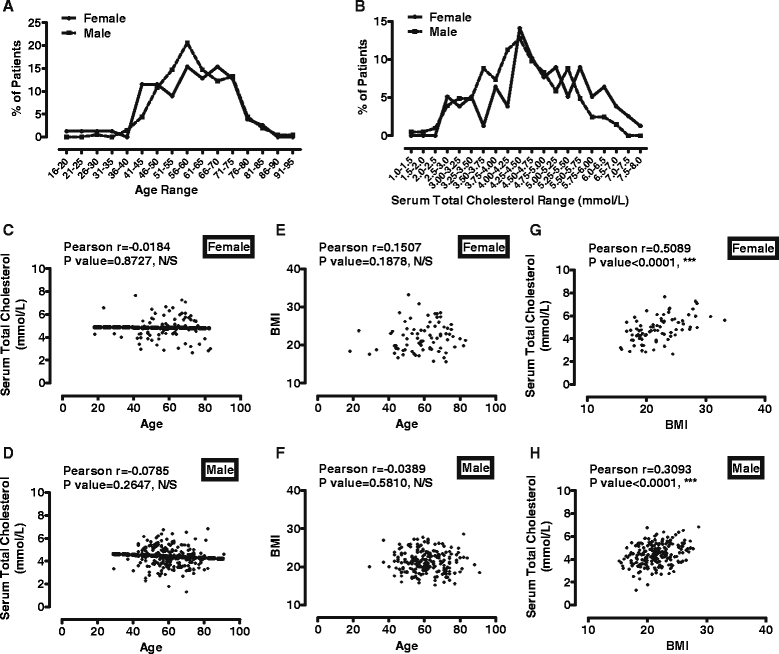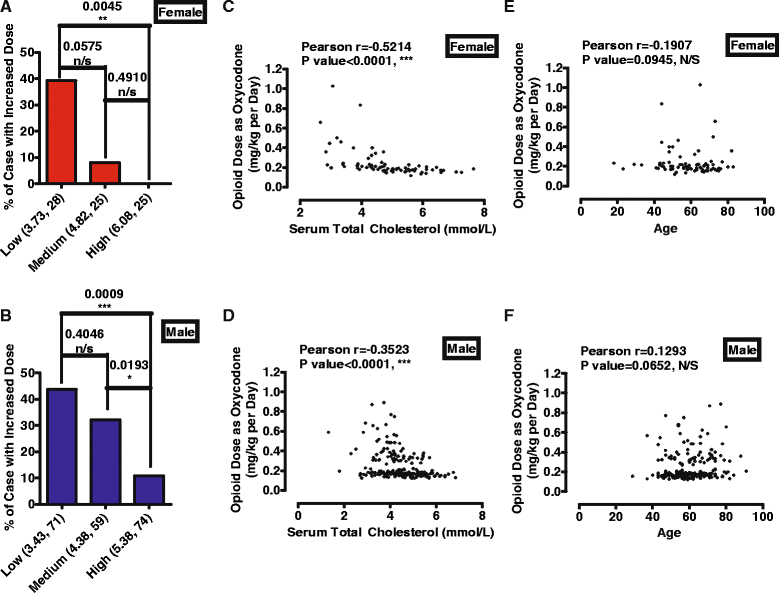Opioid doses required for pain management in lung cancer patients with different cholesterol levels: negative correlation between opioid doses and cholesterol levels
- PMID: 26952011
- PMCID: PMC4782347
- DOI: 10.1186/s12944-016-0212-9
Opioid doses required for pain management in lung cancer patients with different cholesterol levels: negative correlation between opioid doses and cholesterol levels
Abstract
Background: Pain management has been considered as significant contributor to broad quality-of-life improvement for cancer patients. Modulating serum cholesterol levels affects analgesia abilities of opioids, important pain killer for cancer patients, in mice system. Thus the correlation between opioids usages and cholesterol levels were investigated in human patients with lung cancer.
Methods: Medical records of 282 patients were selected with following criteria, 1) signed inform consent, 2) full medical records on total serum cholesterol levels and opioid administration, 3) opioid-naïve, 4) not received/receiving cancer-related or cholesterol lowering treatment, 5) pain level at level 5-8. The patients were divided into different groups basing on their gender and cholesterol levels. Since different opioids, morphine, oxycodone, and fentanyl, were all administrated at fixed low dose initially and increased gradually only if pain was not controlled, the percentages of patients in each group who did not respond to the initial doses of opioids and required higher doses for pain management were determined and compared.
Results: Patients with relative low cholesterol levels have larger percentage (11 out of 28 in female and 31 out of 71 in male) to not respond to the initial dose of opioids than those with high cholesterol levels (0 out of 258 in female and 8 out of 74 in male). Similar differences were obtained when patients with different opioids were analyzed separately. After converting the doses of different opioids to equivalent doses of oxycodone, significant correlation between opioid usages and cholesterol levels was also observed.
Conclusions: Therefore, more attention should be taken to those cancer patients with low cholesterol levels because they may require higher doses of opioids as pain killer.
Figures


References
Publication types
MeSH terms
Substances
LinkOut - more resources
Full Text Sources
Other Literature Sources
Medical

